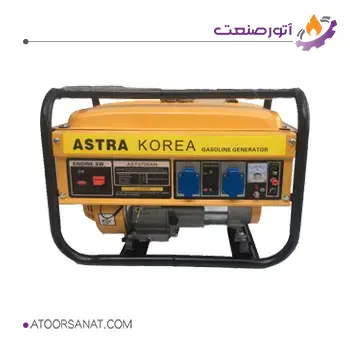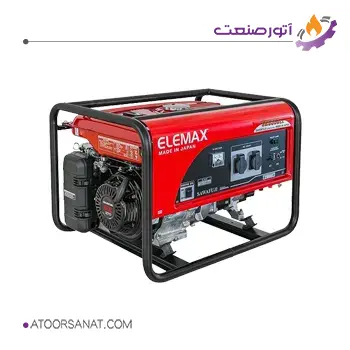Electric Generator

What is an Electric Generator?
An electric generator, also known as a dynamo, is, as its name suggests, an electrical machine that converts chemical or mechanical energy into electrical energy. An AC generator or electric motor is a device that converts chemical or mechanical energy into alternating electric current. In other words, it converts its kinetic energy into electric potential difference without violating the law of conservation of energy.
Electric generators operate based on the principle of electromagnetic induction. Depending on the type of electricity produced, electric generators are classified into AC and DC types. Electric generators are commonly used to supply electricity for household, industrial, and commercial applications.
The most important function of an electric generator is to supply electrical energy during emergencies and power outages. Its use becomes more important when power outages cause significant casualties and financial losses. For example, in hospitals, industrial environments, advanced production lines, mines, etc., a sudden power outage can cause significant financial and human losses. Therefore, the cost of investing in it is much less than the damages that may occur in critical situations.

Features:
- Country of Origin: South Korea
- Output Voltage: 220 Volts
- Applications: For limited power generation in homes, offices, and industries.

Features:
- Country of Origin: Japan
- Output Voltage: 2.2 to 1900 Kilowatts
- Applications: For limited power generation in homes, offices, and industries.
Components of an Electric Generator
Gas-powered (gasoline) or diesel electric generators are the most popular types for industrial and household uses. However, their components are identical. For example, both of them conduct electrical power through electrical cables. The location of the components of an electric generator may vary and often depends on its size. Regardless of whether it is diesel or gasoline, it usually has the same components.
Here is a description of the internal components of an electric generator and a brief explanation of the function of each:
- Engine:
All electric generators, regardless of the fuel they consume, have an engine. This is the engine that powers the electric generator. The more powerful the engine, the more electricity it can produce.
- Alternator:
The alternator’s job in diesel engines is to convert fuel (diesel in this case) into electrical energy and cause the moving parts of the electric generator to move and electrons to move in the circuit.
- Voltage regulator:
It is necessary for the current generated by electricity to be usable for electrical power consumers. The voltage regulator adjusts the output voltage. The regulator also converts AC to DC if needed. The voltage regulator is usually located in the main control box of the electric generator or in the alternator terminal box. The regulator compares the voltage at the generator terminals with a stable reference and, if the voltage deviates from the reference value, increases or decreases the voltage to keep it within the desired range.
- Battery charger:
Just as a car needs a battery to start, an electric generator may also work in the same way. The battery can be charged using the generator itself or an external power source.
- Control panel:
The electric generator operates using a control panel. The control panel performs various tasks, such as turning the generator on and off to manage engine speed and AC frequency.
- Frame or housing:
The housing includes a set that the electric generator is placed in. The frame or housing can have an open structure or even a waterproof structure. Another function of the frame is to ground the electrical components to ensure the safety of the device.
In general, the components of portable electric generators do not differ much. In addition to the items mentioned above, electric generators have outputs for connecting to electrical devices as well as a starter. It should be noted that the starter can be a push button or a handle similar to a lawnmower.
Operation of an Electric Generator
When a conductor moves in a magnetic field, a voltage is induced across the conductor. This is the only basis on which every rotating electric generator (such as portable electric generators) operates. According to Faraday’s law of electromagnetic induction, when a conductor is placed in a varying magnetic field, a voltage is induced across it. This voltage is directly proportional to the rate of change of the magnetic field. Therefore, by rotating a conducting coil in a magnetic field, electricity is generated.
During rotation, when one side of the coil faces the north magnetic pole, the direction of the conductor’s motion will be upward, and at the same time, the other side of the coil will face the south magnetic pole, and the instantaneous motion of the conductor will be downward. When the conducting coil rotates inside the magnetic field, the induced voltage continuously changes its direction. This is the most basic conceptual model to explain the operation of an electric generator. We call this model a single-coil model.
In this case, if we connect a power consumer to the slip rings using two brushes, the alternating electric current generated is supplied to the power consumer. This is an AC electric generator. We can also collect the electricity generated in the rotating coil through a commutator and brush arrangement. In this case, the electricity generated in the coil is rectified by the commutator, and DC electricity is supplied to the load. This is the most basic conceptual model of a DC electric generator.

